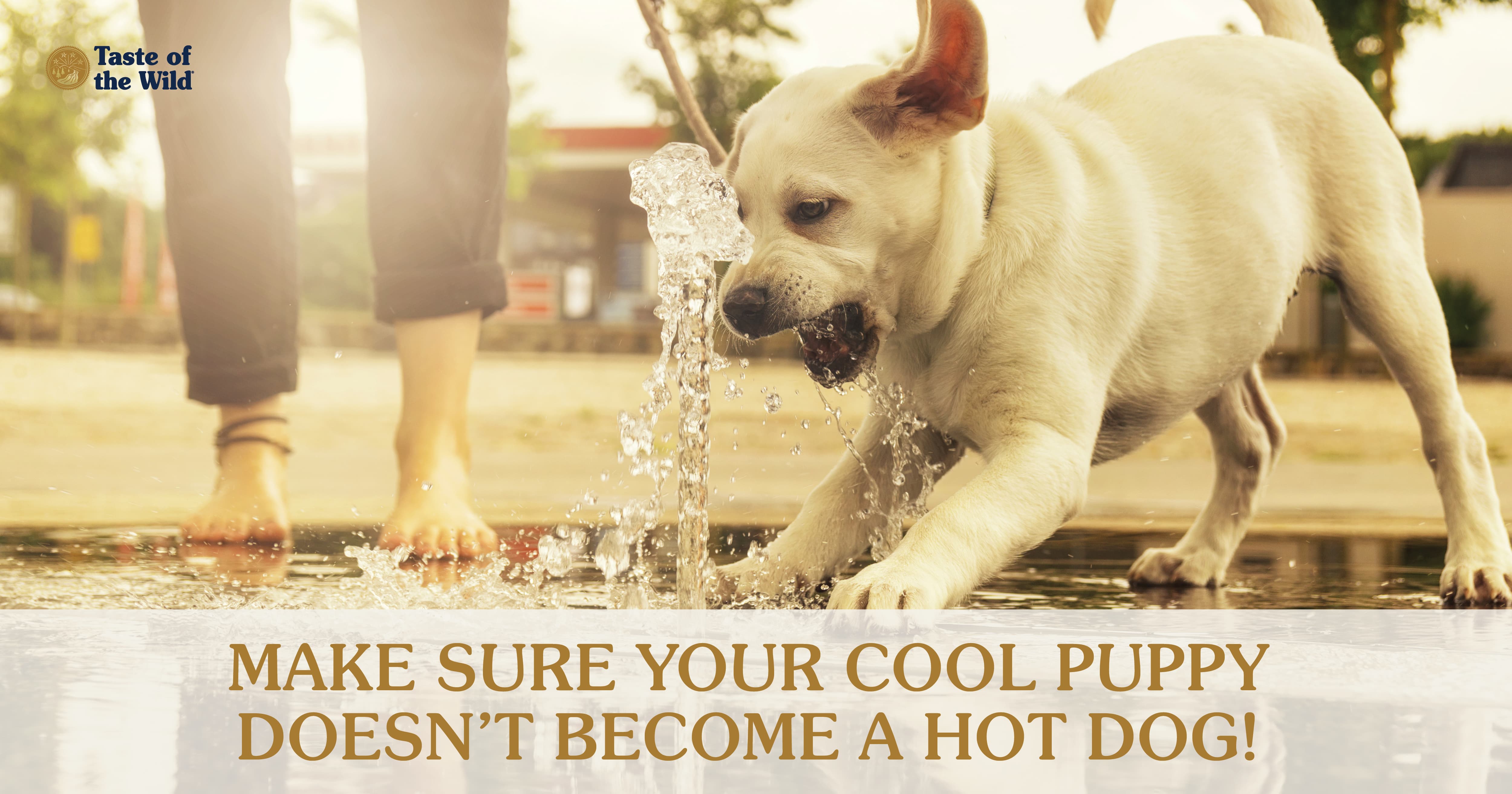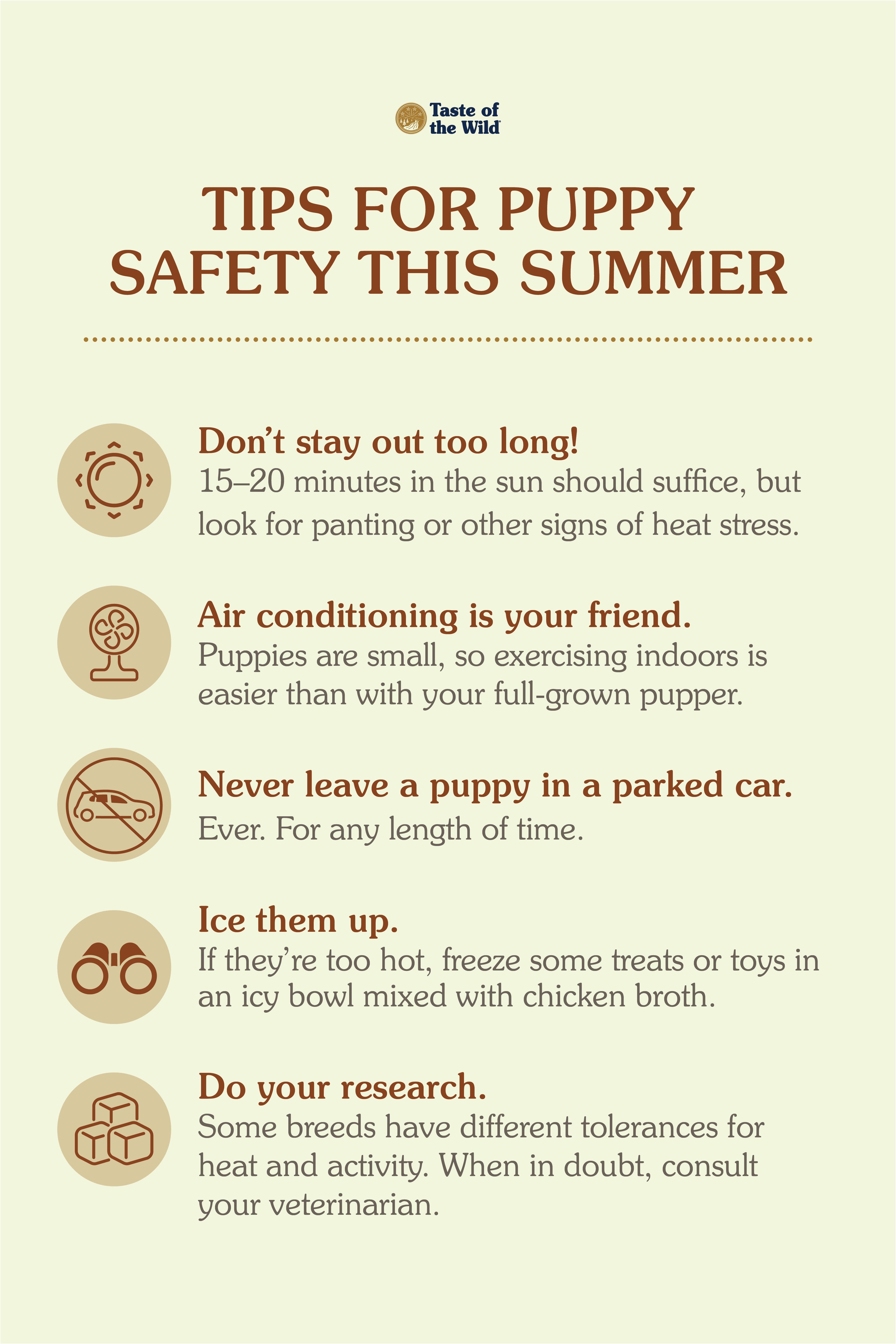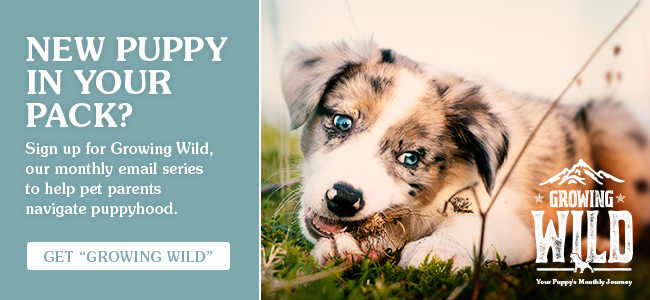
There are several benefits to getting a puppy in or just before summer. Kids are out of school, so they may have extra time to devote to training and bonding with a new summer puppy. Walks are rarely pre-empted by the weather. Driving in the car with the windows down is a doggy delight.
But the summer sun can be every bit as dangerous to a puppy as frostbitten toes. Here are a few tips for prioritizing summer puppy safety while still enjoying all the fun summer has to offer.
A LITTLE SUN GOES A LONG WAY FOR SUMMER PUPPIES
Although puppies are balls of energy, they don’t need nearly as much exercise as adults. While there’s no absolute minute count for how much exercise a puppy needs (it varies by age and breed), 15 to 20 minutes twice a day in the first few months should suffice. But with soaring summer temperatures, even that much time outside can be too much.
Whether it’s hot or cold or anywhere in between, always pay attention to your puppy’s panting and energy level to see when they’re ready to call it a day. But in the summer, note that if you’re feeling hot, they are too… and also consider the fur coat they’re wearing. (Pet parents of short-nose breeds like pugs and bulldogs will need to take extra caution, as those breeds are more prone to overheating.) Try to limit walks to early mornings or evenings, and carry water with you at all times. Dogs regulate their body temperature from the ground up. Hot asphalt can be dangerous to a puppy’s sensitive paws and will cause their body temperature to rise faster. Walk your dog in the grass and let them splash in a puddle, stream or wading pool to help cool off. Similar to cold-weather booties, you can even opt to protect your dog’s paws with a pair of cooling shoes.
WHEN IT’S TOO HOT, PUPPY SAFETY BEGINS INSIDE
Due to their smaller size, you may be able to sneak extra exercise indoors, and you can mix it up by using “play” as training exercises. Use a long hallway to teach your puppy how to fetch. Or play hide-and-seek: Teach the puppy to “stay” while you go hide, then call to them once and reward them when they find you. Avoid using stairs for exercise, though, as the growth plates in a puppy’s bones are not completely formed, and the wrong impact could cause permanent damage.
FREEZE IT FOR SUMMER PUPPY GOODNESS
Let your puppy participate in outdoor fun with some delicious cool treats made just for them. Another way to keep pups cool but entertained is by creating an ice lick from water and chicken broth. Freeze toys and treats inside the mixture. They’ll love the taste while seeing how many licks it takes to get to the reward.
NEVER, EVER LEAVE YOUR PUPPY IN A PARKED CAR
If you are going anywhere alone, then use your absence as crate-training practice. On an 85-degree day, the temperature inside a car with the windows cracked can break 102 degrees in just 10 minutes and reach 120 degrees in 30 minutes. If there is a chance you’d have to leave your pup alone in the car, make other arrangements. Keep in mind that you should never leave any pet, regardless of age, inside a hot car.
TAKE SUMMER PUPPY SAFETY SERIOUSLY
Just like with most wild animals, your puppy has instincts. Wild instincts. Just like small children, puppies need extra care in extreme environments (like in high temperatures and around water). Keep in mind your puppy’s breed and the behaviors they’re inclined to when considering summer activities. And always consult your veterinarian for information about the safety and health of your puppy. Good luck, and remember: The only hot dogs in your yard this summer should be on the grill.

RELATED POST: Taking the Plunge: Water Safety Tips for Dogs
The information in this blog has been developed with our veterinarian and is designed to help educate pet parents. If you have questions or concerns about your pet's health or nutrition, please talk with your veterinarian.

